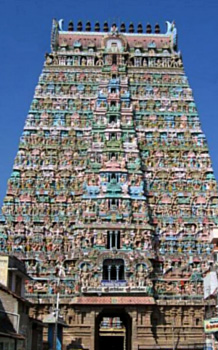 Kulottunga III was chosen by Rajaraja Chola to be his descendant. He was able to bring in a sense of order in the struggling Chola Kingdom. However, the relation between the two is unknown. He did not belong to the direct Chola lineage. On the other hand a poetic work named Kulothungan Kovai marks Kulothunga III as the son of one Sangamaraja. His rule span was from 1178 AD to 1216 AD.
Kulottunga III was chosen by Rajaraja Chola to be his descendant. He was able to bring in a sense of order in the struggling Chola Kingdom. However, the relation between the two is unknown. He did not belong to the direct Chola lineage. On the other hand a poetic work named Kulothungan Kovai marks Kulothunga III as the son of one Sangamaraja. His rule span was from 1178 AD to 1216 AD.
Reign of Kulottunga III
Kulottunga III reigned during the most tumultuous of periods as some of his feudatories preparing to be independent from the Chola Empire. He had to deal with them tactfully. He was a very able lieutenant to Rajadhiraja II, the previous Chola king. Display of his heroism in the wars against Pandya rulers made him to be chosen as the successor to Rajadhiraja II. In the war against the confederation of five Pandya princes, King Parakrama of Ilangai, traditional ally of the Pandiyan Empire was also routed.
Kulothunga III had to deal with adversaries in the north like the Kakatiyas under Gajapati, and the Telugu Cholas of the Pallava lineage who wanted to control Kanchipuram. Gangavadi was under the control of Chola feudatory Adigaiman, and in protecting this territory Kulothunga defeated the Hoysala ruler Veera Ballala II. Adigaiman also ruled Karur and Malainadu which is now in southern part of modern Karnataka. However he entered into a marital alliance with the Hoysalas, thereby, ensuring their support against the Pandyas when needed.
In 1190 AD he attacked Vengi. Initially the combined armies of Chola and Eastern Chalukyas were defeated by Kadamba king Bijjala I. The concern was over major contributor to the temple constructed by Vikrama Chola at Ryali. Bijjala I had become pre-occupied with local wars with the Seunas from Maratha region who were trying to control Northern Kannada. Bijjala II succeeded Bijjala I after his death. Kulothunga III with the support of Telugu Cholas, local chiefs of Vijayawada and Veera Ballala II attacked the occupying armies of the Kadambas and their feudatories in Vengi. The Kadambas were routed away from Rajahmundry to North Kannada; thus, establishing the Chola supremacy in Vengi.
Thereafter the armies of Kulothunga proceeded to Kalinga in 1190 AD-1191 AD. King Gajendra of Kalinga fought bravely but finally became a tribute paying subordinate of the Cholas. He controlled Vengi, Gangavadi and Kalinga in addition to traditional territories like Tamizhagam. The Telugu Cholas and other feudatories of Andhra were faithful to him for next two decades.
Kulottunga III had good ties with his Telugu feudatories who controlled the region between the North Arcot and Nellore districts . In 1196 AD Kulottunga regained Kanchi from them.
Kulottunga destroyed the Pandya Kingdom and its coronation-hall at Madurai. Towards the end of Kulottunga`s reign Maha Varman Sundara Pandya I, brother of Jatavarman Kulasekhara defeated him. However he was not completely victorious as the Hoysalas had intervened to help the Cholas. Chola Empire did not lose its capital Gangaikonda Cholapuram. Kulottunga assumed the title of Maduraiyum Pandiyanmudittalaiuam Kondaruliya. He had firm control over the Telugu feudatories.
Kulottunga was highly interested in architecture. The temple at Tribhuvanam in Tanjore district and the Kampahareswara temple near Kumbakonam were built during his rule. He had also undertaken the extension and renovation of many temples around his kingdom.
During the close of his reign the fortune of the Chola kingdom was apparent. The rise of feudatory chiefs like Sambuvarayas, Banas, Telugu-Chodas, Kadavas, Malaiyamans, Adigamans and others paralyzed the central administration of the Chola Empire. The growing domination of Hoysalas and the Pandyas were making the Chola kingdom weak.
Kulothunga died some time in 1218 AD and Rajaraja Chola III succeeded him as the next emperor of the Cholas.
He was able to preserve the empire and its administration system endowed to him by his predecessors. His personality was responsible for continuation of the Chola Empire under him, and he can be considered as the last great Chola ruler.



















